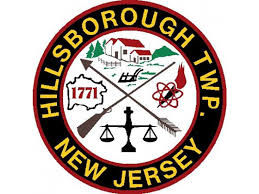By Andrew Martins, Managing Editor
A site acquisition specialist and a professional planner for Verizon Wireless were questioned by members of the Hillsborough Zoning Board of Adjustment over a proposed proposed cell tower at the Woods Road firehouse during their final meeting of 2016.
For the last few months, township officials have heard testimony from various individuals working on the proposed project about its in-depth specifications and alleged benefit to the surrounding area.
During the second half of the Dec. 14 zoning board meeting, Verizon attorney Warren Stilwell brought William F. Masters Jr., a professional planner, before the board.
Verizon wants to build the proposed tower on the property of the Woods Road firehouse to improve service, especially with 4G phones that people increasingly use to reach high-demand internet service, to the 2,200-home area.
The telecommunications company would then pay the fire company an undetermined amount per year for the right to operate behind the firehouse, beyond the outfield of a baseball field.
The proposal needs zoning variances, primarily to place a cell tower and house equipment in a residential zone, close to homes. The ordinance says a tower must be 1,000 feet from a residence.
Verizon is also asking the Board of Adjustment for a variance to come within 2,000 feet of the Woods Road Elementary School (the proposed tower is 940 feet away), and to exceed the allowable maximum 35-foot height for a structure in the zone. The proposed tower is planned to stand 126 feet tall, including the lightning rod.
The proposal not only calls for the construction of a 120-foot cell tower, but also the corresponding facility will be powered in an emergency by a natural gas generator.
Mr. Masters testified to the technical side of the project as it pertained to planning, oftentimes giving frank descriptions of the project at hand.
“The situation here is that the entire search area is in two single-family residential zone districts. I believe that Verizon Wireless has attempted to locate a property that is the most suitable property available within the search area in order to try to mitigate the detrimental impacts,” he said.
Mr. Masters also testified that there were indeed some detrimental aspects to the project, but that things could be done to alleviate those issues.
“Are there detrimental impacts? Obviously. There’s visual impact here,” he said. “The ability to mitigate that visual impact could be done with alternative techniques, such as a cluster or flush mount type of installation.”
Addressing the township’s wireless cell tower ordinance, Mr. Masters pointed out that the municipality allows for towers up to 150 feet in certain zones, though not in the ones proposed.
“None of these zone districts are located either within or approximate to the boundaries of the identified search area,” Mr. Masters said. “Whenever you are seeking a use variance, there is certainly some detriment to the zone plan, but I believe that the location of this property does not rise to the level of substantial impairment.”
Prior to Mr. Masters’ testimony, attorney Robert F. Simon, who is representing a group of concerned homeowners near the proposed site, questioned the project’s site acquisition specialist Joseph Oates for the second consecutive hearing.
According to previous testimony, Mr. Oates reached out to the Woods Road Firehouse in a bid to acquire the proposed location for the cell tower’s construction back in April 2014. Additional consideration was taken to the search area that the expert employed when he was looking for a suitable area for the proposed tower.
Another issue that came up during the hearing was an apparent disparity between letters of interest written by Mr. Oates to the firehouse and the Drenchko family, whose property on Hillsborough Road was at least initially seen as a potential location for the tower.
According to Mr. Simon, the letters dating back as far as 2014 show proposed lease information provided to the firehouse that described an initial five-year term, with four additional five-year terms that could be considered for renewal. Specific information on the monetary compensation related to the lease was also divulged at that time.
That being said, Mr. Simon pointed out that a letter to the Drenchkos dated that same year had zero reference to any lease information. In fact, it wasn’t until a letter dating as recently as this past February that the Drenchkos received word of any lease information.
When asked, Mr. Oates agreed that there was a discrepancy with the amounts offered as well, with the gap representing an approximately $8,000 difference between the offers.
Another hearing on the proposed cell tower will be held on January 11.

